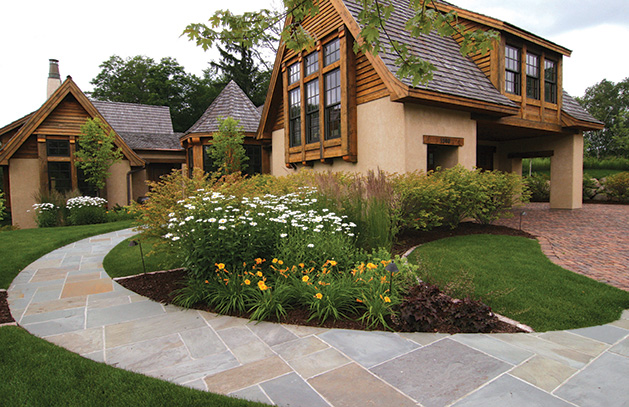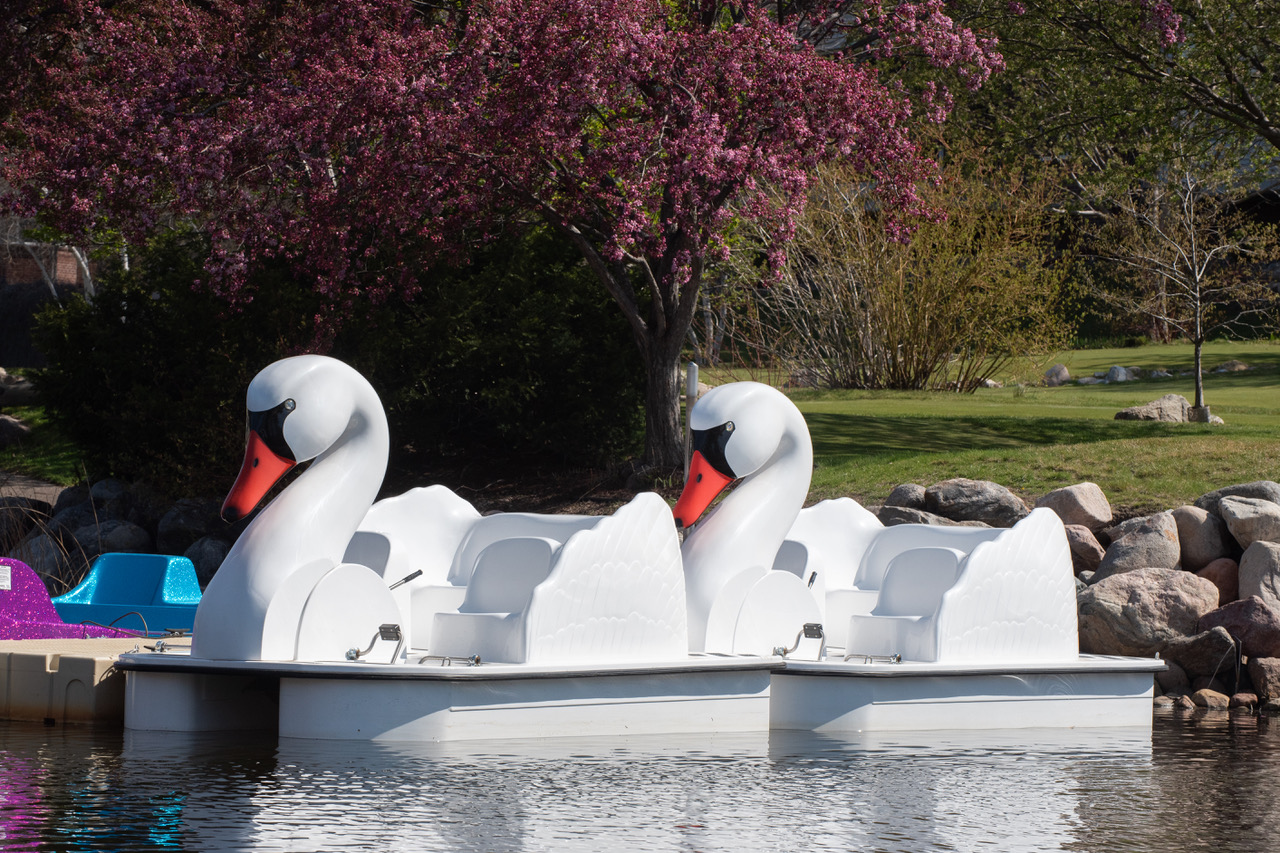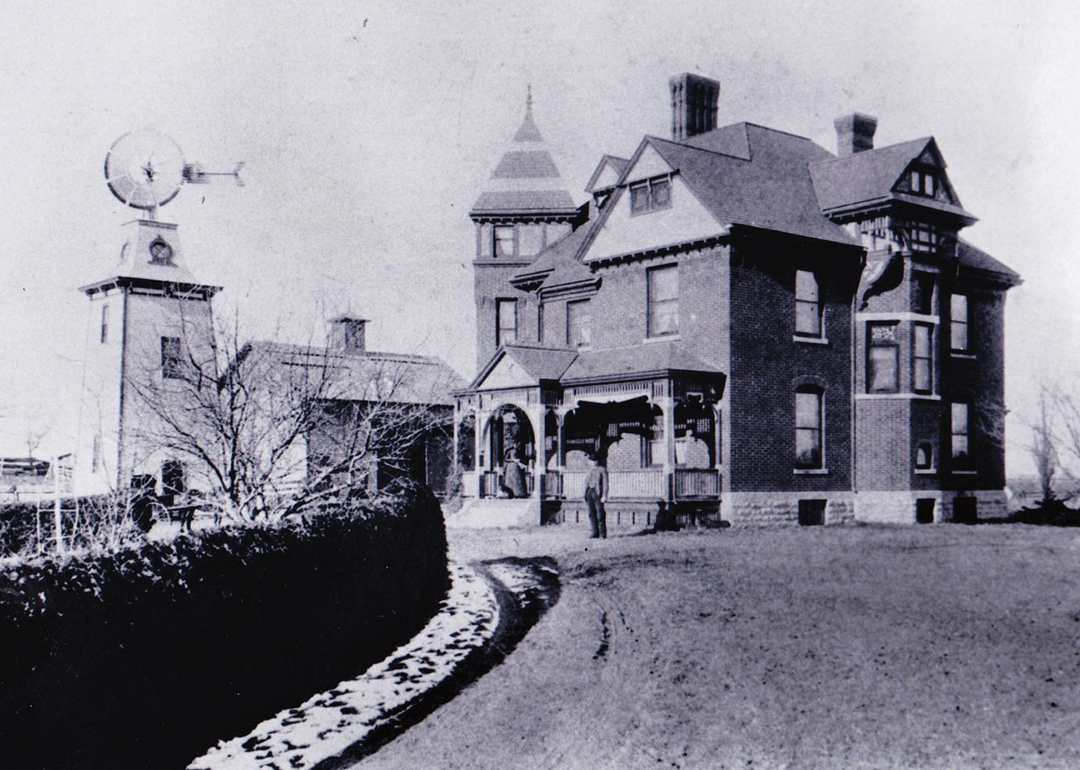
Photos: Yardscapes
We asked David Kopfmann, owner of Yardscapes, what homeowners should consider when planning their perfect outdoor oasis.
The days are getting longer but the summer season is short in Minnesota. If your landscape isn’t quite the tranquil escape you were dreaming of all winter, it might be time to renovate your outdoor spaces. We asked David Kopfmann, owner of Yardscapes, what homeowners should consider when planning their perfect outdoor oasis.

Kopfmann is celebrating 45 years in business. He started his firm at age 19 after finishing a landscape design program. He loves working outdoors and says his job allows him to dream for people. He says his company’s job is to provide an outdoor entertainment space that people look forward to coming home to after work—a landscape they’ll appreciate as soon as they pull into the driveway. Here’s are some snippets from our chat …
Q+A
EM: How long does the planning/design process typically take?
DK: After an initial meeting, an initial design creation takes 2-3 weeks. More extensive designs will likely come with a range of costs since things can tweaked and changed. Complete designs for bigger jobs can take three weeks to over a month to put together, particularly for a pool project. We can then start the project approximately three weeks later.

EM: What should homeowners take into consideration when deciding on specific plants/shrubs/trees?
DK: Experts can help with these decisions. Start with colors. Do you like or hate certain colors? This helps us derive a color palate. Next is maintenance. Do you enjoy working in your yard? Do you plan to hire maintenance? An important factor is also the environment. Do you want a perennial garden but have a shady yard? That would require a change in the environment. Sometimes a site dictates the plant selection. Also, screenage–are there neighbors who need “softening”? Is there a nearby dog barking? When you see a neighbor’s house, how does it make you feel?
EM: What’s most important to consider when choosing hardscape materials?
DK: We prefer natural stone. Concrete has a tendency to crack and colors can be different depending on the weather when poured. Concrete also requires saw cuts, a look some clients don’t love. Natural stone can shift, albeit minimally. But if it shifts, we can adjust it. Pavers can look like natural stone but are concrete and are made in a factory under high pressure with integrated color. These can be less expensive. We tend to focus on the desired shape of the patio, flow of sidewalk up to the house, etc. There is also price. We don’t want cost of material to shrink your desired space. So, we get the size and flow correct first and then price the design at different categories.

EM: What should homeowners consider/know before installing an outdoor fireplace?
DK: There is a real trend toward enhancing outdoor entertainment areas. We are rarely called just for changing out plants. People want patios, fire pits and pergolas. Open fire pits can only be 3’x3’ and need to be 25-30 feet away from any structure. If it has a chimney, it can be closer to the house depending on the home’s roof line and airflow off the house. Gas can go either way. An open gas firepit is also limited to 3’x3’ but is more controlled, so it can be approximately 10 feet from the house. Consider having seating all the way around any wood burning firepit because of smoke. Guests don’t need to change seats around a gas firepit, and you can have a gas burning fireplace with a wood burning look and chimney. This provides the effect but not the smoke, something to consider especially if screens are nearby. Gas can also be easily enjoyed year-round. You can enjoy the ambiance from inside the house without needing to go outside to start a fire.

EM: Tell us about retaining walls.
DK: These are sometimes structurally necessary when there’s a sloped yard–or when we need to cut into a hill to create a flat yard. Sometimes retaining walls are non-structural but instead are an accent or used to divert water. Shorter walls can accent a patio or provide seating for larger crowds. We work more with natural stone and try to pull detail from the house. We consider what works best on the site, is it strong enough? Does it match the desired design style? Those types of questions direct wall material.

EM: What’s the minimum space needed to install an in-ground pool and patio?
DK: I’ve designed everything from a 10’x10’ pool to a 30’x60’ residential pools. These projects are site driven. Every city has different rules regarding property lines, setbacks and hard surface calculations. I can wiggle a pool into most any lot, but I’ll want to know the planned usage of the pool and will inform homeowners of what their city will allow. Fence requirements frequently change. The advent of auto covers has some cities eliminating a fence rule, but all cities are different, and requirements can run between 40 inches and 6 feet. Edina requires a 48-inch high fence around any pool. Edina also requires a concrete or hard surface apron all the way around a pool so that if an observer is not a swimmer, they can walk all the way around in case of emergencies. In other cities, homeowners can have a waterfall or tuck the pool against a retaining wall. It’s also interesting to note that we’re getting more requests for built-in hot tubs that can be open year-round. The heat can be turned down in summer for a dipping pool.
EM: Discuss pros/cons of using mulch versus stone for flower beds or other landscaped areas.
DK: I prefer mulch. Some prefer rock because they think it looks cleaner. But if it’s not regularly maintained, rock can look tired in 5-10 years. And it’s hard to remove and change. Rock also heats up, even with irrigation. On a hot day, heat gets directed at plants. Rock needs a weed barrier and is also not friendly for perennials because it prevents growth and spreading. These are the reasons that mulch is preferred. Mulch does require some top dressing every 1-2 years but it’s friendlier with plants as it holds moisture and may not need irrigation. Consider a combo. Some clientele prefer rock next to the house to control drainage and for a cleaner look, and then away from the house, we use mulch around plant beds.
EM: What’s the best way to border a landscaped flower bed?
DK: When I started in the 1970s, we did tons of black plastic edging which demands maintenance. Metal will also pop due to the freeze/thaw cycle and it’s hard to put back down. Unwanted things can also grow in and over the line. So, we switched to use limestone edging about 25 years ago. It doesn’t deteriorate. You can set a lawnmower wheel on it. Natural stone has enough girth and weight not to pop up, and if it does, the individual pieces are simpler to fix versus 10-foot lengths of other edging materials.
Yardscapes
Facebook: Yardscapes, Inc.
Instagram: @yardscapes
Twitter: @yardscapesinc






















